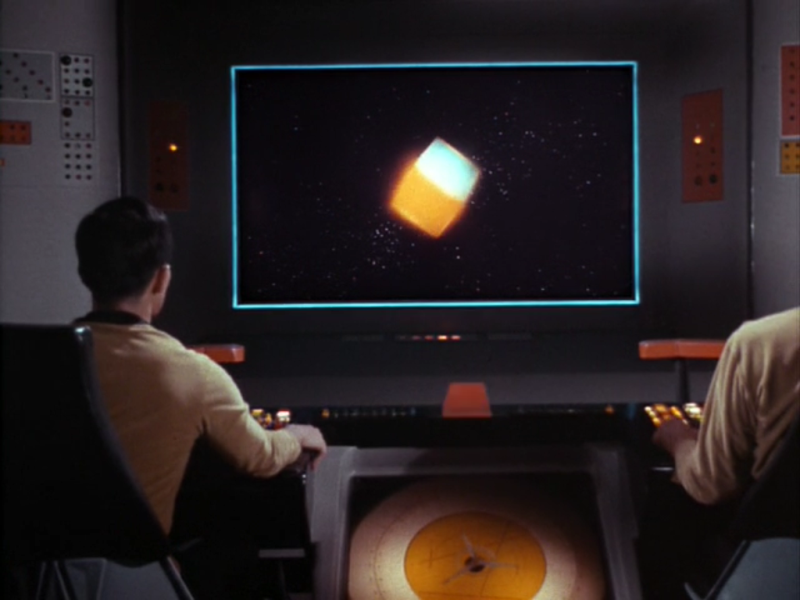It looks like you're using an Ad Blocker.
Please white-list or disable AboveTopSecret.com in your ad-blocking tool.
Thank you.
Some features of ATS will be disabled while you continue to use an ad-blocker.
share:
Not reject just skeptical, I remember reading about this theory some years ago. It's not my favorite.
originally posted by: Phage
a reply to: Devino
Since there are striations which overlay the crater, it's not likely they are related. At least some of the grooves had have to have occurred after the impact.
One of the most highly regarded theories (which you reject?) has to do with tidal stresses.
I know, correlation does not imply causation.
Just because someone thinks something looks like something else doesn't mean it is.
Yes, same old same old. It would be nice for someone to seriously consider an electromagnetic origin, apart for the EU guys at thunderbolts that is.
No magnetism involved. No electric universe. Just gravity.
Sure, possible but how likely? Thanks for the link, I'll read it when I get a chance. Maybe it'll answer some of my questions regarding that theory.
She canna take eny more c'pn. She's breakin up!
agupubs.onlinelibrary.wiley.com...
Oh, and apart from how unlikely you may think it is, models show that an impact origin for the crater is entirely possible.
originally posted by: Devino
Yes, same old same old. It would be nice for someone to seriously consider an electromagnetic origin, apart for the EU guys at thunderbolts that is.
To date, there has been no observed evidence (or even theoretical mechanism) for gigantic cosmic electric discharges, let alone ones that create craters or other surface features on planets or moon. Rocks in the Solar System are for the most part electrically neutral. Magnetic fields are created by spinning cores, such as in the Sun, Earth, or Jupiter.
I’m not sure about your definition of “gigantic” but Earth’s Aurorae come to mind. They are caused by charged particles from the solar wind that have been separated due to Earth’s magnetic field lines thus becoming electric currents. This has been observed and measured, if I remember correctly, to 10^7 amps in the space above Earth’s poles and around our magnetosphere.
originally posted by: wildespace
To date, there has been no observed evidence (or even theoretical mechanism) for gigantic cosmic electric discharges,
Electric Currents in Outer Space Run the Show
I find it very odd that some still debate the existence of electric currents in space.
… when the first in situ evidence for the existence of space currents was obtained using satellites in the 1960s.
The study of plasma physics has shown, and is reproducible in the lab, that charge separation does occur in a vacuum and thus forms an electric current, i.e. Birkeland current. Plasma physicist Anthony Peratt claims this is scalable to 17 orders of magnitude and I believe Hannes Alfvén has claimed, or at least theorized, up to 27 orders. I hope this qualifies as “gigantic”.
The Strongest Electrical Current in the Universe Spotted, 2 Billion Light Years From Here
I trust that this qualifies as gigantic electric discharges.
Researchers at the University of Toronto have found some serious current emanating from a huge cosmic jet 2 billion light years from Earth. At 10[^]18 amps, the current is the strongest current ever seen, equalling something like a trillion bolts of lightning.
I agree with you here for the most part. No crater on any celestial body, outside of lab experiments, have been witnessed to be cause by an electric current. To be fare though how many craters have been observed to be cased by impacts? I know of one.
originally posted by: wildespace
let alone ones that create craters or other surface features on planets or moon. Rocks in the Solar System are for the most part electrically neutral. Magnetic fields are created by spinning cores, such as in the Sun, Earth, or Jupiter.
Impact! New Moon Craters Are Appearing Faster Than Thought
LROC's observations revealed that the newly created hole is 62 feet (18.8 meters) wide, NASA officials said.
As far as the dynamo theory for Earth's magnetic field, or any planet/moon that has a magnetic field, I have to wonder how much of a role, if at all, electromagnetic induction plays on our magnetosphere. Evidence seems to show that the solar wind affects Earth's lighting.
High-speed solar winds increase lightning strikes on Earth
Is our magnetosphere affected in the same way that Earth's lightning is?
Scientists have discovered new evidence to suggest that lightning on Earth is triggered not only by cosmic rays from space, but also by energetic particles from the Sun
edit on 6/23/2018 by Devino because: (no
reason given)
originally posted by: bobs_uruncle
Why is it so fuzzy? The Japanese make some really nice cameras and optics.
originally posted by: FlyInTheOintment
I second the request for an explanation as to why the image is 2004-era vodafone 0.6 megapixel camera quality, when the Japanese lead the world in camera-optics-electronic-gizmos...
Why have they provided such a crappy photo? Indeed, why have they even bothered to send a probe into space if my Sony Xperia smartphone's camera apparatus is better equipped for the task (proportionately speaking, in terms of scaled-up fit-for-purpose standards), being as it is the best on the terra-firma smartphone market?
Strikes me as suspicious.
Best smartphone cameras --- Worst space probe cameras = ???
Photographing a 900m asteroid from 240km away is like photographing a human face from 53 meters away. How good does a zoomed in portrait from 174 feet away look on your smartphone? Post results here.
JAXA have released this giff showing the rotation of Ryugu.
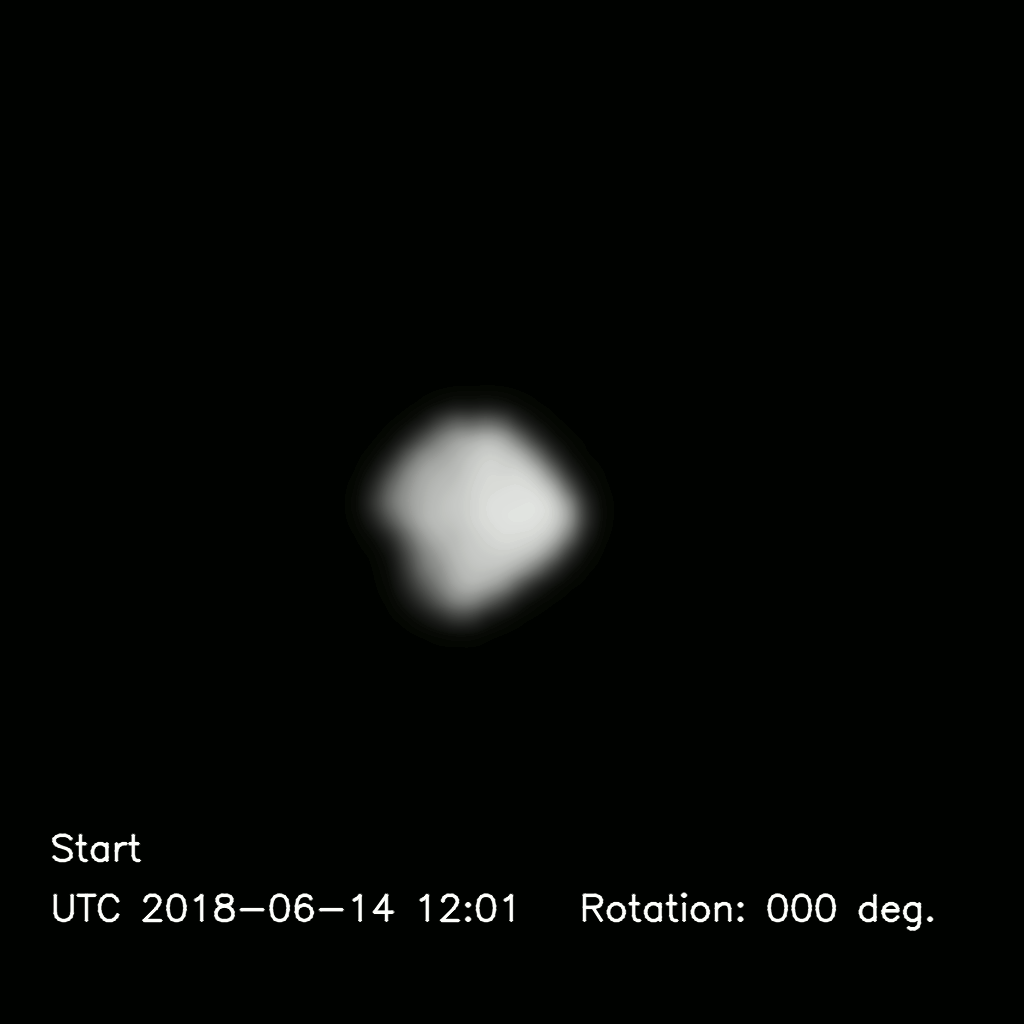

From this animation, you can see the asteroid surface appears to be strongly angled, and pitted with dents or craters. Also, the axis of rotation looks close to the vertical direction (perpendicular to the ecliptic plane in which the Earth orbits the Sun) in this image.
The direction of rotation is retrograde, spinning in the opposite sense to the Earth and Sun, and to the direction of the planetary orbits. This information is very important for exploring the asteroid. As we see the surface of Ryugu more clearly from now on, we will start to gain a more precise knowledge of the asteroid's properties.
www.isas.jaxa.jp...
We can see some boulders now! www.hayabusa2.jaxa.jp...
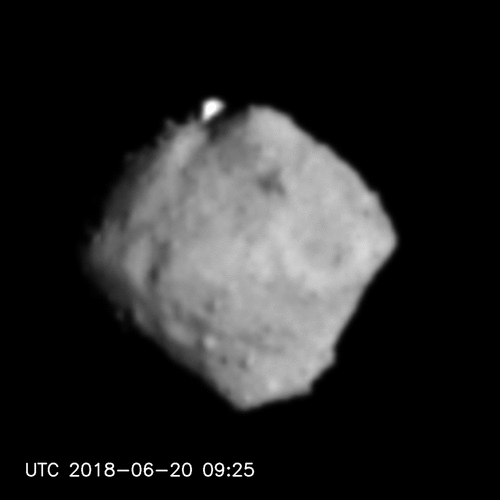
(GIF created by me)
www.hayabusa2.jaxa.jp...

(GIF created by me)
www.hayabusa2.jaxa.jp...
edit on 25-6-2018 by wildespace because: (no reason given)
Lol, I'm a bit late with that, as they've published this amazing image, from just 40 km away:
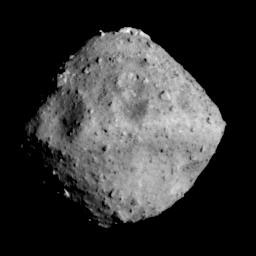
www.hayabusa2.jaxa.jp...

www.hayabusa2.jaxa.jp...
The shape of Ryugu is now revealed. From a distance, Ryugu initially appeared round, then gradually turned into a square before becoming a beautiful shape similar to fluorite [known as the 'firefly stone' in Japanese]. Now, craters are visible, rocks are visible and the geographical features are seen to vary from place to place. This form of Ryugu is scientifically surprising and also poses a few engineering challenges.
originally posted by: wildespace
We can see some boulders now! www.hayabusa2.jaxa.jp...
(GIF created by me)
www.hayabusa2.jaxa.jp...
Wow!
I've seen more than a few pics of asteroids and meteors but nothing like this!
The shape and the spin seem "unnatural".
Can't wait to see more!
originally posted by: Saint Exupery
originally posted by: bobs_uruncle
Why is it so fuzzy? The Japanese make some really nice cameras and optics.
originally posted by: FlyInTheOintment
I second the request for an explanation as to why the image is 2004-era vodafone 0.6 megapixel camera quality, when the Japanese lead the world in camera-optics-electronic-gizmos...
Why have they provided such a crappy photo? Indeed, why have they even bothered to send a probe into space if my Sony Xperia smartphone's camera apparatus is better equipped for the task (proportionately speaking, in terms of scaled-up fit-for-purpose standards), being as it is the best on the terra-firma smartphone market?
Strikes me as suspicious.
Best smartphone cameras --- Worst space probe cameras = ???
Photographing a 900m asteroid from 240km away is like photographing a human face from 53 meters away. How good does a zoomed in portrait from 174 feet away look on your smartphone? Post results here.
I use 500mm mirror and 650mm telescopic lenses with 2x converters. I'll give you the are f11, but my 280mm is f5.6. I use film, old school, and with Asa 1600 I can do some very clear and high accuracy night shots with the aperture open for only 15-60 seconds. I can even get pretty good results with asa 400.
Camera tech has come a long way since the 80's and there should be no trouble in setting up short, medium and long range cameras on a single probe.
Just for fun... I didn't realize they were strapping android phones on their probes lol.
Cheers - Dave
edit on 6/26.2018 by bobs_uruncle because: (no reason given)
originally posted by: bobs_uruncle
Camera tech has come a long way since the 80's and there should be no trouble in setting up short, medium and long range cameras on a single probe.
Little point in that, since the cameras will do just fine now that the spacecraft is very close to the asteroid. The image I linked above is pretty decent.
Don't worry, we'll get some amazing closeups.
Latest image. That's one rocky asteroid.
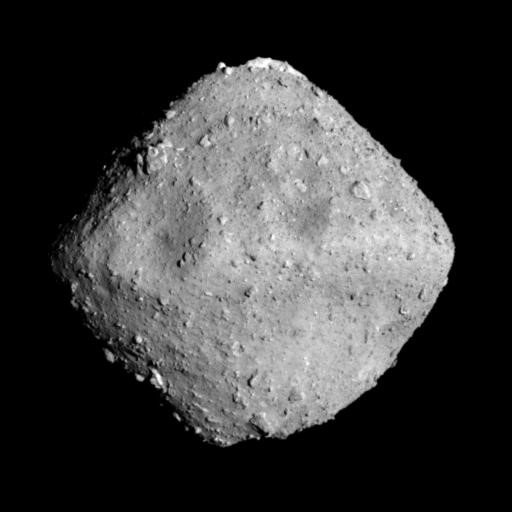
I hope the hopper-landers will be safe and won't bounce off one of them.

I hope the hopper-landers will be safe and won't bounce off one of them.
originally posted by: wildespace
Latest image. That's one rocky asteroid.
Pyramids! Monoliths! Broken spaceship parts! I see them all.
originally posted by: wildespace
originally posted by: Devino
Yes, same old same old. It would be nice for someone to seriously consider an electromagnetic origin, apart for the EU guys at thunderbolts that is.
To date, there has been no observed evidence (or even theoretical mechanism) for gigantic cosmic electric discharges, let alone ones that create craters or other surface features on planets or moon. Rocks in the Solar System are for the most part electrically neutral. Magnetic fields are created by spinning cores, such as in the Sun, Earth, or Jupiter.
I yearn for the day when your type no longer has authority over the ignorance masses. Speak proper and with confidence, they'll believe anything you say to be fact, right?
No electricity in space folks, go home, nothing to see. Lightning isn't real either. Neither are Nebula clouds.
Phil Plait - What would it be like to stand on the surface of
Ryugu
Tiny gravity and strong centrifugal force make it a very interesting object to be on. A good jump, and you'll float off into deep space.
Tiny gravity and strong centrifugal force make it a very interesting object to be on. A good jump, and you'll float off into deep space.
a reply to: wildespace
Now THAT is a perfect example of a conglomerate type of asteroid: big o' pile of rocks and dust!
Now THAT is a perfect example of a conglomerate type of asteroid: big o' pile of rocks and dust!
First true-colour image of Ryugu (next to Earth for comparison in albedo)
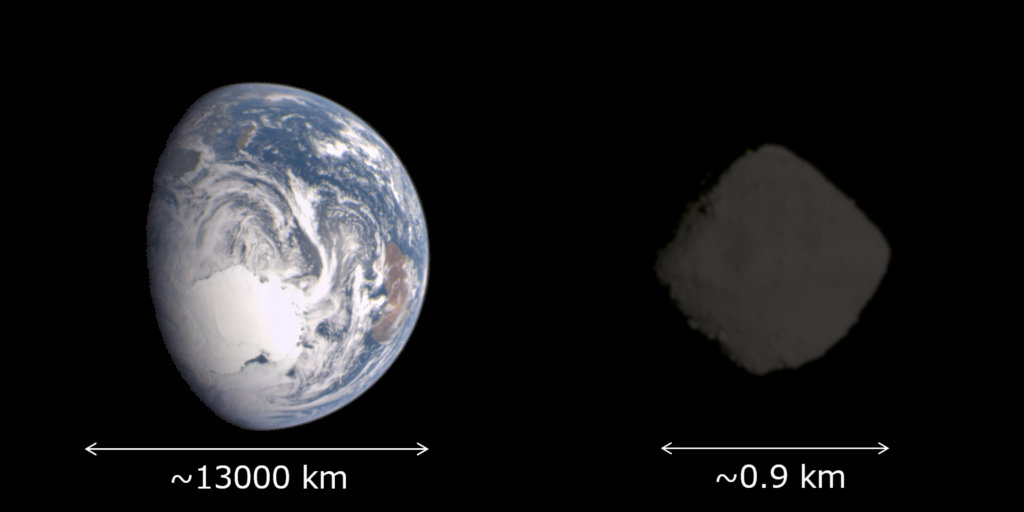
Source: www.spaceflightfans.cn...
I used the colour image together with high-rez b&w image to get this:
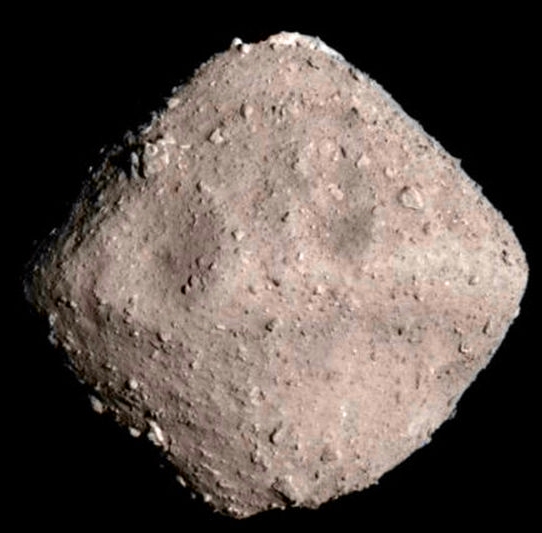
(Saturation was slightly increased)
And with levels adjusted to reflect its low albedo. It's like a slightly reddish piece of coal.
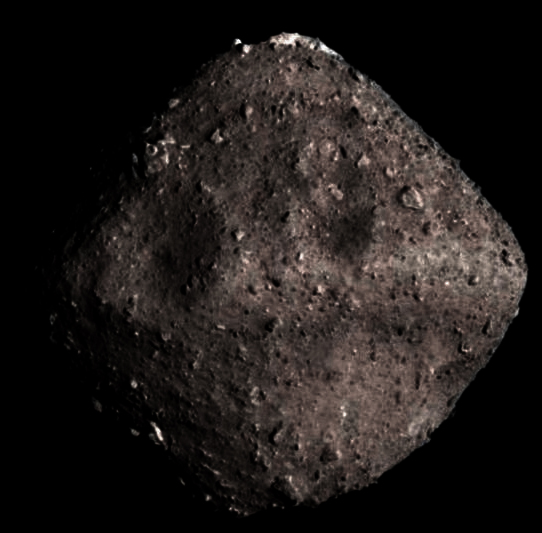

Source: www.spaceflightfans.cn...
I used the colour image together with high-rez b&w image to get this:

(Saturation was slightly increased)
And with levels adjusted to reflect its low albedo. It's like a slightly reddish piece of coal.

edit on 29-6-2018 by wildespace because: (no reason given)
edit on 29-6-2018 by wildespace because:
(no reason given)
The shape almost reminds me of Moqui Balls .
Stones in Utah that formed over millions of years. One stone would circle the other in water over time forming positive and negatively charged stones of sandstone surrounded by magnetite.
www.livescience.com...
It makes me wonder if this asteroid at one point and time had another circling it in space which could cause its shape.
Interesting.
Stones in Utah that formed over millions of years. One stone would circle the other in water over time forming positive and negatively charged stones of sandstone surrounded by magnetite.
www.livescience.com...
It makes me wonder if this asteroid at one point and time had another circling it in space which could cause its shape.
Interesting.
edit on 29-6-2018 by Darkblade71 because: (no reason given)
a reply to: Darkblade71
Can you provide a link that says something about "positive and negatively charged stones?" Because the one you provided doesn't. Nor does it say anything about one stone circling another.
Can you provide a link that says something about "positive and negatively charged stones?" Because the one you provided doesn't. Nor does it say anything about one stone circling another.
new topics
-
Putin, Russia and the Great Architects of the Universe
ATS Skunk Works: 32 minutes ago -
A Warning to America: 25 Ways the US is Being Destroyed
New World Order: 4 hours ago -
President BIDEN's FBI Raided Donald Trump's Florida Home for OBAMA-NORTH KOREA Documents.
Political Conspiracies: 10 hours ago
top topics
-
President BIDEN's FBI Raided Donald Trump's Florida Home for OBAMA-NORTH KOREA Documents.
Political Conspiracies: 10 hours ago, 28 flags -
A Warning to America: 25 Ways the US is Being Destroyed
New World Order: 4 hours ago, 10 flags -
Gaza Terrorists Attack US Humanitarian Pier During Construction
Middle East Issues: 17 hours ago, 8 flags -
Las Vegas UFO Spotting Teen Traumatized by Demon Creature in Backyard
Aliens and UFOs: 15 hours ago, 6 flags -
2024 Pigeon Forge Rod Run - On the Strip (Video made for you)
Automotive Discussion: 16 hours ago, 4 flags -
Is AI Better Than the Hollywood Elite?
Movies: 12 hours ago, 3 flags -
Maestro Benedetto
Literature: 12 hours ago, 1 flags -
Putin, Russia and the Great Architects of the Universe
ATS Skunk Works: 32 minutes ago, 1 flags
active topics
-
Putin, Russia and the Great Architects of the Universe
ATS Skunk Works • 7 • : RussianTroll -
"We're All Hamas" Heard at Columbia University Protests
Social Issues and Civil Unrest • 286 • : FlyersFan -
A Warning to America: 25 Ways the US is Being Destroyed
New World Order • 9 • : Lazy88 -
President BIDEN's FBI Raided Donald Trump's Florida Home for OBAMA-NORTH KOREA Documents.
Political Conspiracies • 21 • : CriticalStinker -
SETI chief says US has no evidence for alien technology. 'And we never have'
Aliens and UFOs • 75 • : Hecate666 -
Las Vegas UFO Spotting Teen Traumatized by Demon Creature in Backyard
Aliens and UFOs • 13 • : FlyersFan -
Mood Music Part VI
Music • 3105 • : BrucellaOrchitis -
The Acronym Game .. Pt.3
General Chit Chat • 7752 • : bally001 -
Is AI Better Than the Hollywood Elite?
Movies • 18 • : Hecate666 -
Hate makes for strange bedfellows
US Political Madness • 49 • : network dude

